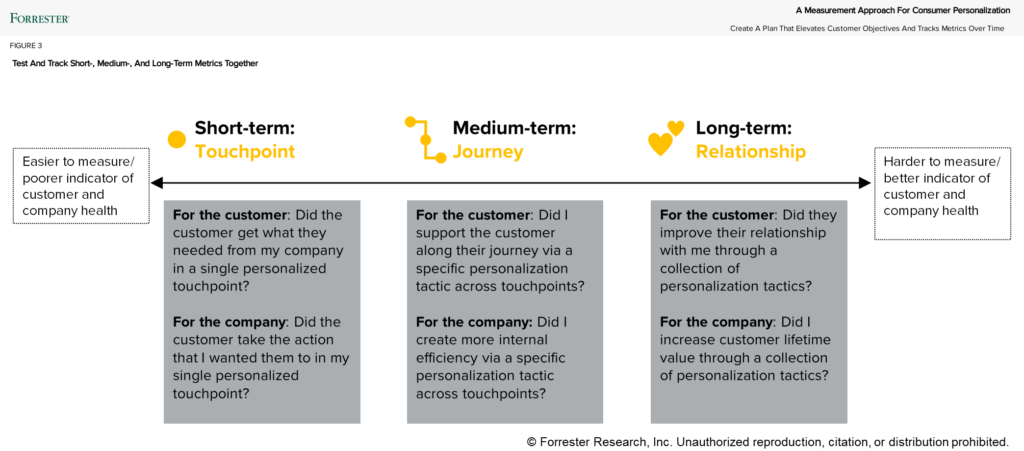“Hey, Count von Count, how do I know if my personalization strategy is working?” It’s difficult for companies to assess because they often measure myopically at the individual point of interaction. But personalization tactics are numerous and diverse across a company, requiring a holistic approach to measurement for a complete view of personalization efforts.

Source: Giphy
Count von Count will say to count three (!!) variables as you create a measurement approach for your consumer personalization programs:
- Customer vs. company objectives. Delivering personalized tactics that optimize to what customers need from you (e.g., relevant service, time savings, etc.) is more critical than optimizing to your company’s goals (e.g., drive sales, increase click-throughs, etc.). Prioritize KPIs that gauge how customers view value from your personalization tactics.
- Metrics by department. Personalization programs vary across departments and teams; so will the metrics they use to evaluate their tactics. Categorize the different key performance indicators that customer experience, marketing, commerce, customer service, etc., track for a more comprehensive picture across personalization efforts.
- Short-, medium-, and long-term time frames. Short-term touchpoint metrics differ from medium-term journey metrics, which are distinct from long-term relationship metrics (see figure). Companies use short- and medium-term metrics to look backward and benchmark performance through testing and incrementality of individual personalization tactics. Long-term metrics predict customers’ feelings over time and the impact of a collection of personalization tactics.

My immense gratitude to Tina Moffett and Maxie Schmidt for the three-analyst collaboration on this research. For more on consumer personalization and the three pillars of strategy, data, and technology, see our research roundup here.
Let’s hear your thoughts! Schedule an inquiry or guidance session with us.








